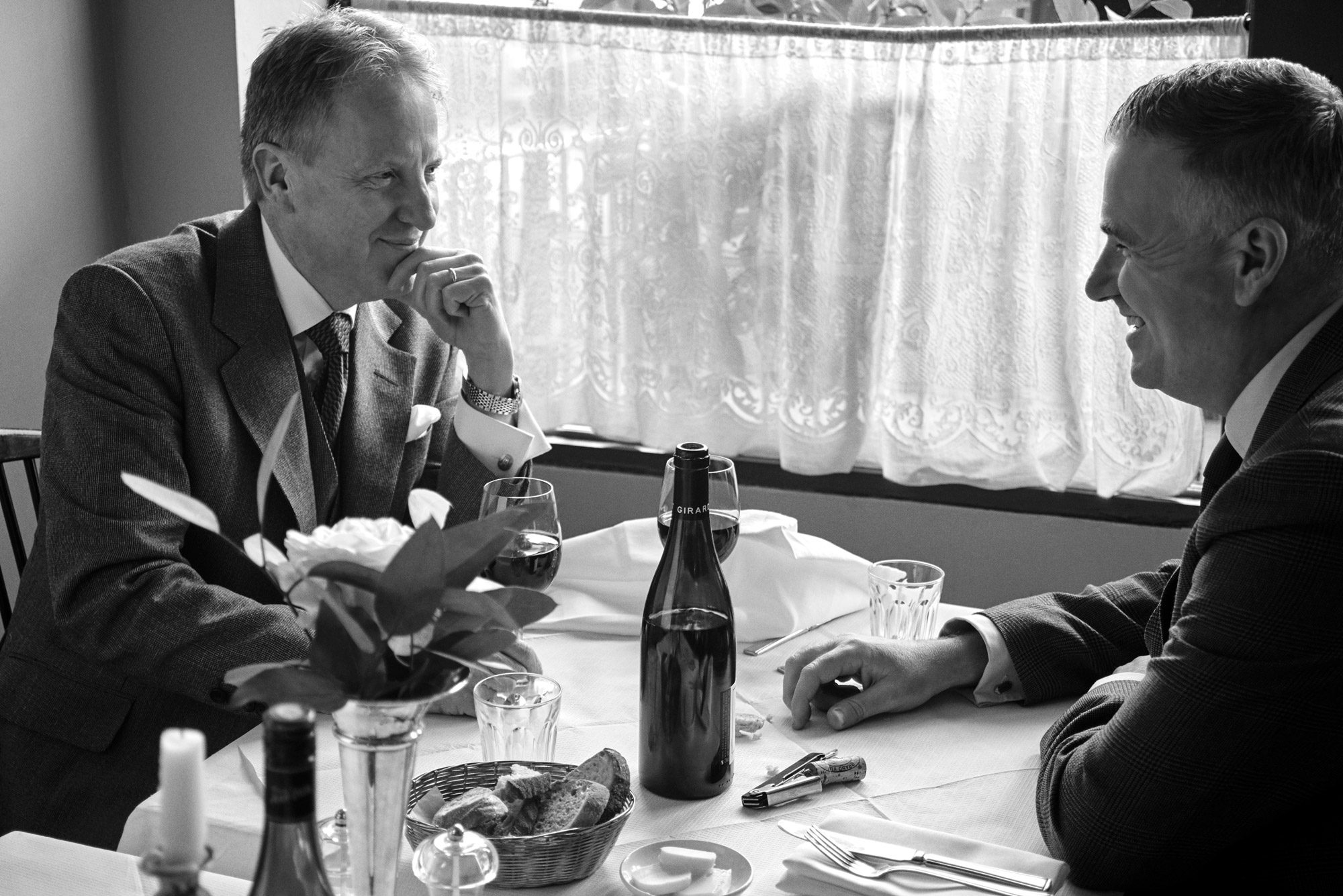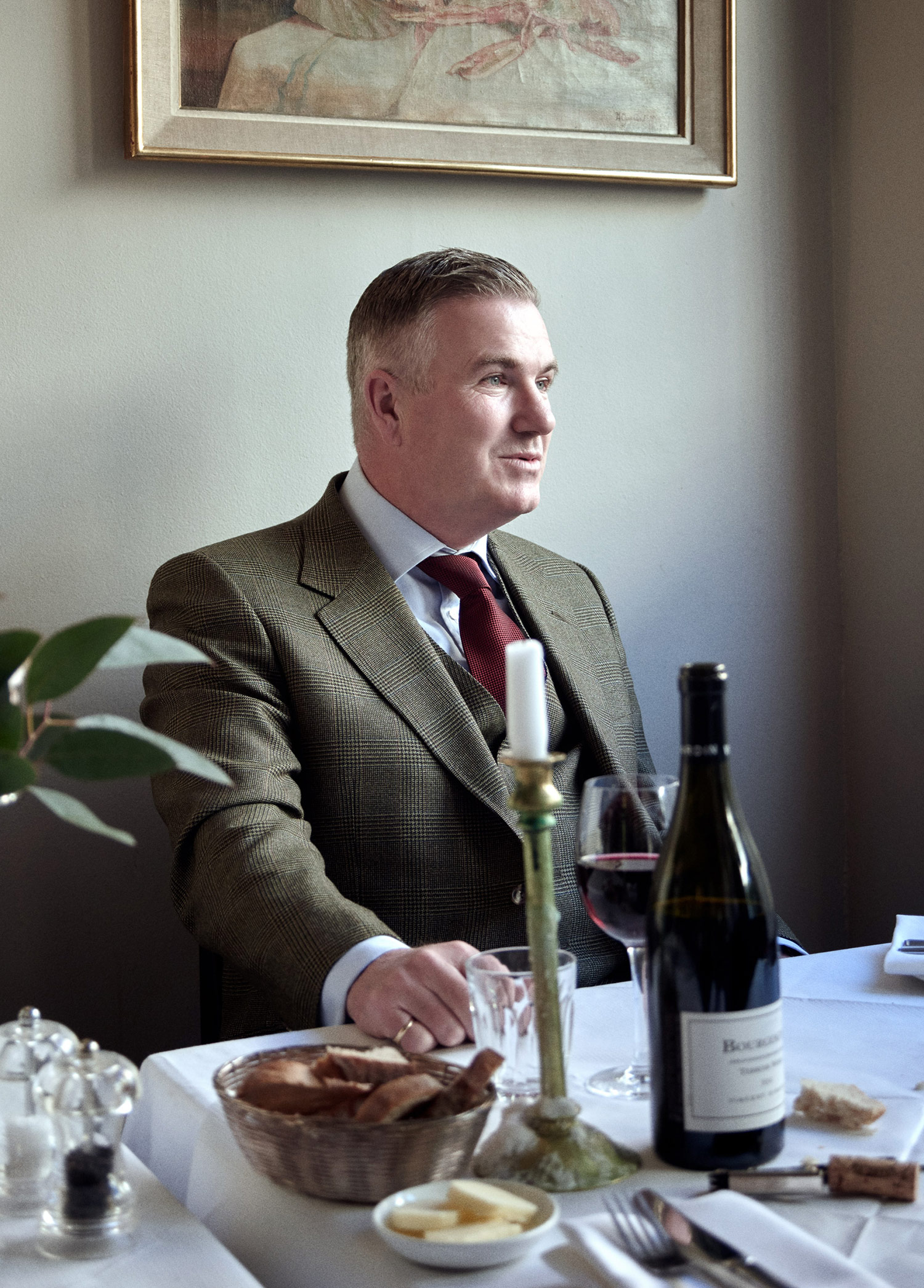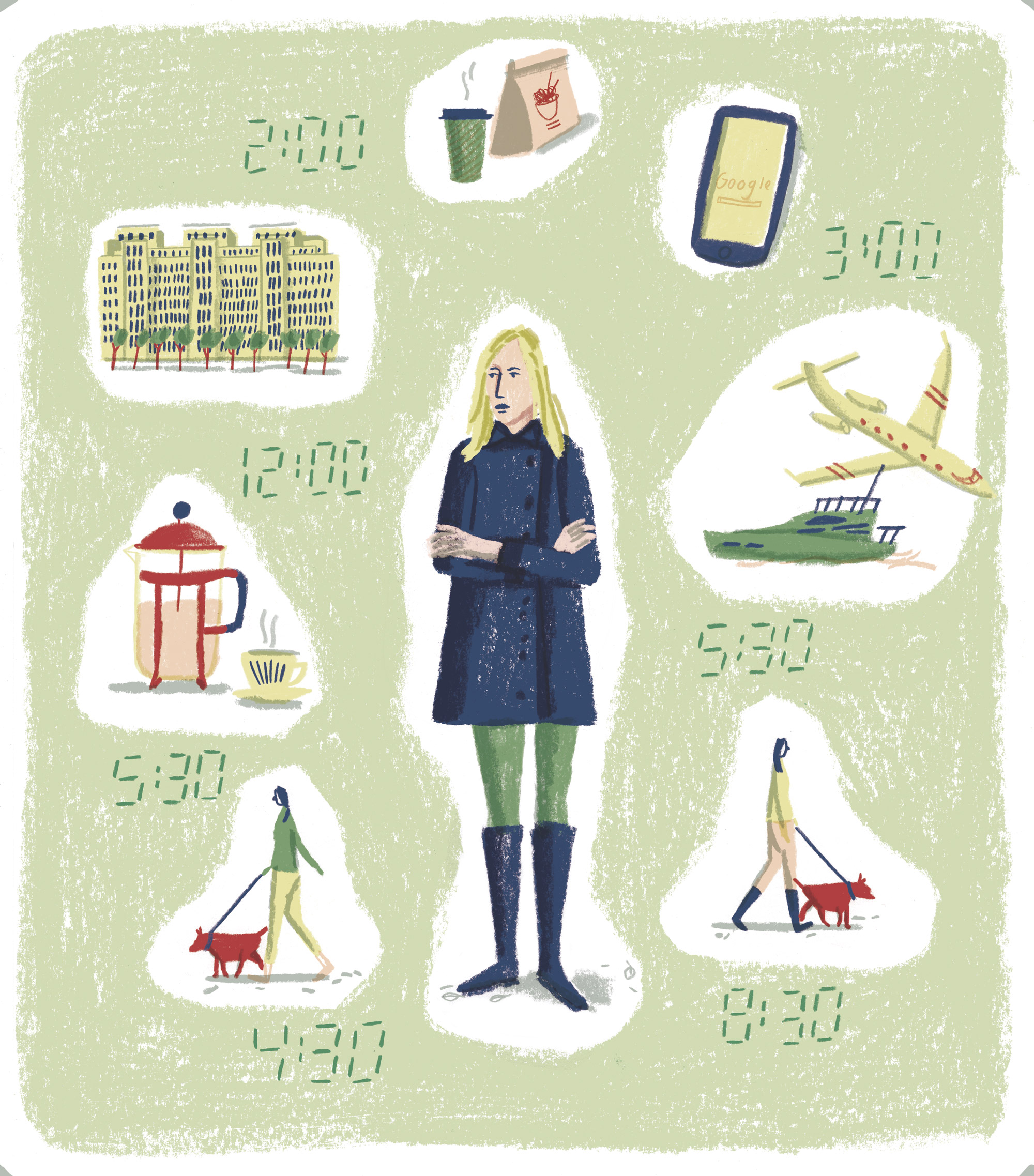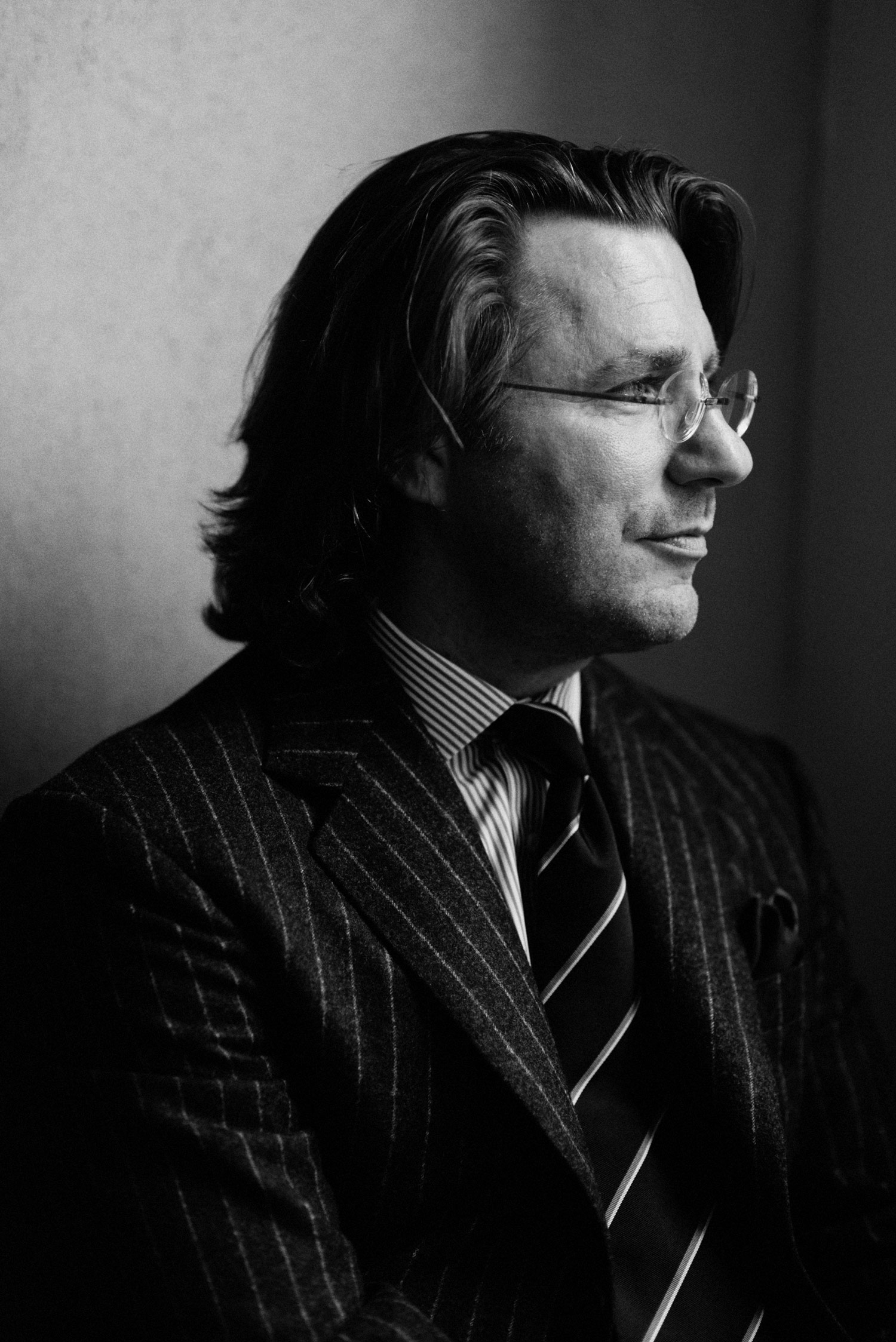A Cumbrian and a cockney respectively, cutter Tom Mahon and tailor Paul Griffiths might initially strike you as an odd couple. Longer than many marriages, their 26-year professional relationship started at venerated Savile Row firm Anderson & Sheppard. Then, when Mahon returned to Cumbria and set up English Cut, he gradually wooed “Griff”, now co-director and head coat-maker, to the north; a mark not just of their compatibility, but of their interdependence. “I always try to cut the best I can, but if I can’t get it made well, it’s not going to happen,” says Mahon. “Likewise, Griff can sew absolute works of art, but if they’re not fitted properly it doesn’t make any difference. So whether we get on or not, we’re stuck with each other.” We sat down with the pair at Hardy’s Brasserie, around the corner from the English Cut store on Chiltern Street, to find out about the journey they’ve been on together…

When did you first meet?
TOM: Summer 1990. I trained at S Redmayne in Cumbria, and I joined Anderson & Sheppard as an undercutter to head cutter Dennis Hallbery.
GRIFF: I started a four-year apprenticeship at Anderson’s in 1987, so I’d have been on my last year in 1990. We were all scared of his boss.
So were you the go-between, Tom?
T: You know something … In those days, cutters did not mix with tailors.
G: Correct, they didn’t mix at all.
T: I walked upstairs one day to where the tailors worked and said generally to the room, “Where do you fellas go for a pint?” They all looked nervously at each other and eventually one of them went, “Err, we’ll be in the Burlington Arms.” They all thought I was a spy.
G: We couldn’t talk about the cutters then, could we?
What’s the distinction between a cutter and a tailor?
T: In layman’s terms, I’m the architect, he’s the builder. I deal with front of house, the design and the drafting. And Griff does all the craftwork: the sewing.
G: The important bit, haha!
T: I was the only sociable cutter there. The others rarely went upstairs.
G: They’d come up to bring a job to you. But if the intercom went, and they called your name, you’d panic. You didn’t want to go downstairs. T It sounds really Dickensian. And some things about it were quite hard. But I really liked it. There was no messing around.
If cutters and tailors never mixed, how did you get to know each other?
G: It calmed down a bit in the end, didn’t it?
T: Yes, it did. And there was a change in that the cutting room moved upstairs. Although it didn’t make any odds to me because I always went for a pint with the tailors and eventually they realised, “Oh, he’s all right.”
G: I started going in the cutting room and playing chess as well.
T: We used to have a chess club at lunchtime. We were all addicted.


Was it about that time you started talking about moving up north, Tom?
T: I always knew I was going to leave; I really enjoyed the life down here, but as it went on I thought, “If we do something good, people will come to us.” But we never had any plans of doing anything together.
G: I was a typical southerner then: “I ain’t going up north!”
T: A lot of tailors work remotely. At first Griff worked for us in London, and the only delay it caused was one night’s transport on a courier. We’d send him five or six jobs on a Monday evening, and he’d have them Tuesday morning. So he didn’t need to move.
What prompted you to eventually relocate?
G: Seven years, a couple of visits and having my oldest boy.
T: He came up, and I took him for a sail on Ullswater lake. The sun was shining, and I remember him standing on the shore and saying, “It’s not bad up north.”
G: The first few months after I moved up north, I was still working mainly for Anderson’s and I was wondering how it was all going to go. The next minute, I got a job for Liam Neeson. Then I got two jackets to make for Anda Rowland, who owned Anderson’s.
T: If you’re good at something, you can live where you want. The best tailors don’t always work on Savile Row – they’ll often work in a shed at the bottom of the garden.
Why did you want to go into tailoring?
G: I’m a big Spurs fan. When I was about nine years old, everyone did sewing at school. I sewed this Spurs shield and I got the highest commendation. Then, when I went to secondary school, I wasn’t into metalwork or woodwork, so I thought, “I’ll do fashion and fabrics.” I was the first boy to do it, but I wasn’t a mug: it was me and all girls, haha!
Do you miss anything about London?
G: Not a lot, to be honest with you. It’s just so peaceful up there.
T: It’s a nice way of life. It’s great for the children.

You’ve always maintained a presence in London, but now you’ve opened a store on Chiltern Street…
T: Some people – even some of our colleagues – thought we should get a place on Savile Row. But we don’t need a street to give us authority, and the people who feel that way possibly need examine their priorities. Sadly, you can purchase garments there that have no connection at all with the Row.
G: They’re not even making on Savile Row. That’s the funny thing.
T: A client dragged me to the Firehouse. I came out and thought, “This is a nice street, with a nice vibe.” I’ve been in the trade for 33 years, which is long enough. But if I’d been in the trade for 50 or 60 years, I think this is what Savile Row would have been like then.
G: Yeah, definitely. I was just going to say that
How would you describe your relationship after 26 years?
G: Very good. He does what I tell him to do …
T: Haha! Personality-wise, we get on and we do totally different roles. So far it’s worked out pretty well.
Has the launch of made-to-measure (MTM) changed your roles much?
G: No, in that I’m still making the bespoke jackets up north. But with MTM, going out to the factory in Japan and showing them exactly how we wanted it was a bit of a game-changer.
T: There’s an awful lot of rubbish out there with MTM. And you know why? It’s because they’ve never involved a proper cutter and a proper tailor. You just go to the nearest factory, strike up a deal and sew your name in it. We went to the factory and said, “This is how our patterns are; let’s see your pattern. We want to adjust the drape and take out the shoulder. Can we get it to roll through? Change the pocket shape? Widen the waistband?” I don’t think there’s a better MTM garment out there.
Did you ever imagine when you sewed that Spurs shield that one day you’d be flying over to Japan ?
G: Nah. Not even to New York or San Francisco. Most of the time I wouldn’t go: Thomas was the one who would travel. But when we started the MTM, I began travelling more. One of the girls from my sewing class at school moved to New York, so I got to see alot more of her. Her boy’s my godson.
T: Everyone always rates the cutter. Tailors are in a protective bubble where they just have to produce a lovely job: they can make suits for a client for 40 years and never even know who he is.
G: Yes, I would know his surname … and have a good idea of what his body looks like!
T :But the cutter is at the coalface because they have to find the work, deal with the client and stand there while they say, “I heard you were the best cutter in the world – this is rubbish.” Luckily, they don’t say that.
G: That’s because us tailors sort it out for them, haha!



